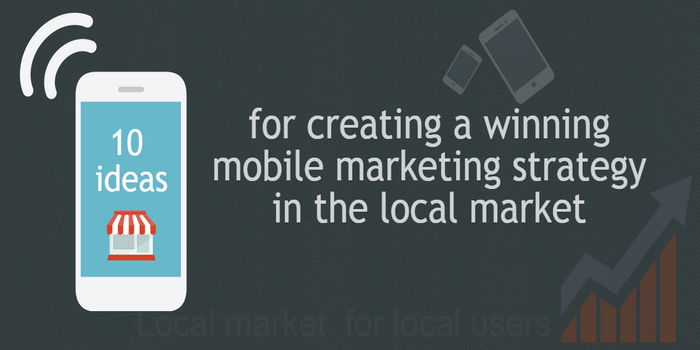
According to various researches, mobile phone and smartphone users in the USA, for example, use search engines, yellow pages, reviews, ratings, and daily deals, to find something on the internet. While the share of mobile search was merely 34% in 2013, it grew up to 42% in 2014.
Such a leap in mobile search popularity creates a considerate reason to review the mobile strategy. Below are ten tips that will help you develop the winning mobile strategy for your business.
1. Mobile Strategy Is An Express Condition Of Business Success
Designing a mobile strategy is not just desirable. It’s a necessity. While we may still hear from time to time that people tend to use stationary PCs and laptops to browse internet, rapid increase in mobile search popularity will close that gap pretty soon.
While back in 2012 80% of respondents used their stationary PCs or laptops to browse the web, this ratio was down to 73% in 2013 and to 66% in 2014. At the same time, in 2012 25% of respondents used their mobile phones for internet search, which grew to 34% in 2013 and jumped to 42% in 2014.
Unless the trend changes, most Americans in 2015 will use mobile search, and mobile phones and smartphones will become a more popular tool than PCs to browse the web.
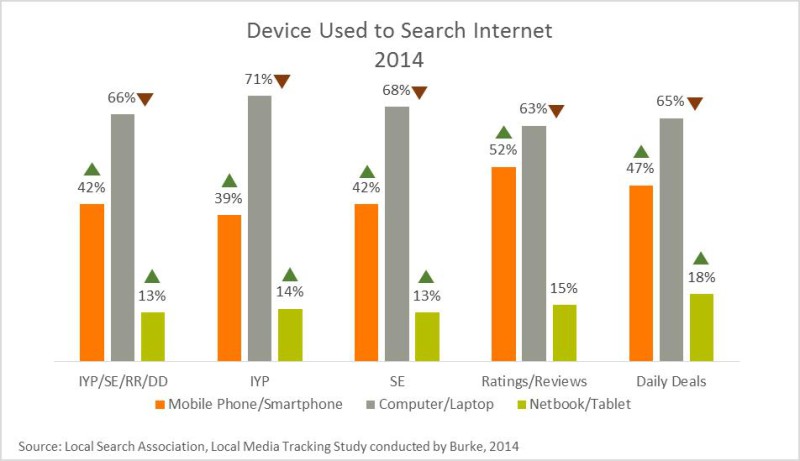
Conclusion. Mobile revolution is inevitable. Marketing efforts and campaigns are normally aimed at “ordinary” internet users. But it is important to actively get involved in developing a mobile promotion strategy. It’s easier to manage its development today, while tomorrow it might become much more difficult. Don’t put this work off into cold storage – the trends are too obvious.
2. User Reacts To Mobile Marketing
However, mobile advertising is obviously backlogging behind the popularity of mobile phones. There are a number of reasons for it, beginning from inconvenience of displaying ads and ending with difficulty to evaluate your investments. There is also a popular opinion that a consumer doesn’t react to the ad placed on a small screen.
Everything’s changing, and forecasts reflect these developments. Digital advertising expenses, including mobile search, are expected to double over the next three years and reach $59 billion by 2018. Such forecast is provided by researches from eMarketer.
The latest available results show that consumers do react to mobile marketing campaigns. Researches by the Thrive Analytics consulting company have shown that 55% of users click on ads on their mobile devices, thus displaying their interest in ads on smartphones and tablets. This category of peope is willing to make a purchase: 53% of those who saw the ad had ended up buying the product.
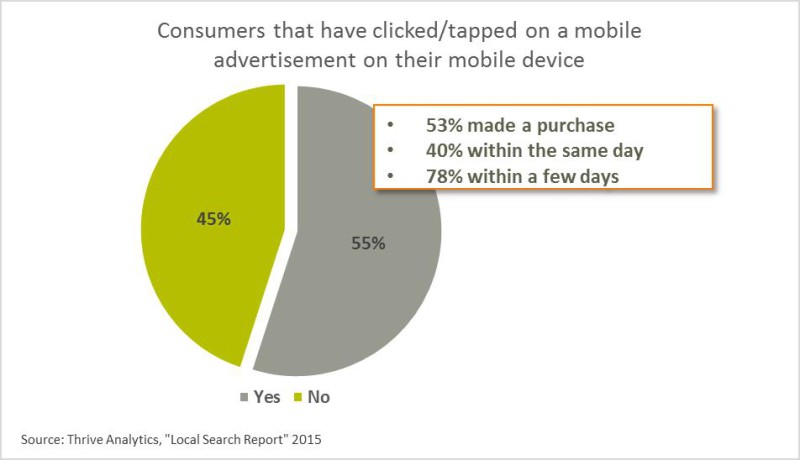
Conclusion. Mobile marketing becomes more and more efficient and attractive from the consumer point of view. Even if a company had no significant experience in mobile promotion in the past, it’s time to explore this space and use new opportunities to grow your business.
3. Users Tend To Search For Local Information On The Go
It’s within the past 12 months that user approach to search for local information has changed drastically. As compared to the last year of 2014, 25% more consumers are looking for local information while being away from their homes or workplaces.
Today 52% of inquiries for such information are received from mobile devices, while their owner is driving or simply away from home (work).

Conclusion. Local business must address users that study local information on the go using geo-targeted ads. It’s a very effective strategy.
It shall be noted that geo-targeting can have different forms: selecting specific territory, geographic self-determination, detecting a market segment, etc. Using this tool increases the efficiency of your mobile marketing efforts.
4. Consumers Use Their Phone While In The Store
60% of consumers regularly or almost daily use their mobile phones while shopping in malls and supermarkets. These are the results of the research by Thrive Analytics.
At the same time, the number of users that use their phones and the regularity of mobile devices’ use during shopping is also growing. This tendency is dreadful for owners of clothing and construction supplies shops as they become afraid to “showcase” their product – they believe that buyers only research the product represented in the shop to buy it online elsewhere (much cheaper, usually).
On the other hand, the data of the U.S. Department of Trade doesn’t seem so frightening, as online retail accounts for just 7.7% market share. Therefore, 92% of purchases are still made in traditional shops. Researches show that in 2014 over half of all purchases (52%), for which customers were “pushed” by mobile marketing, included the visit to the shop, and 64% of them ended up being made off-line.
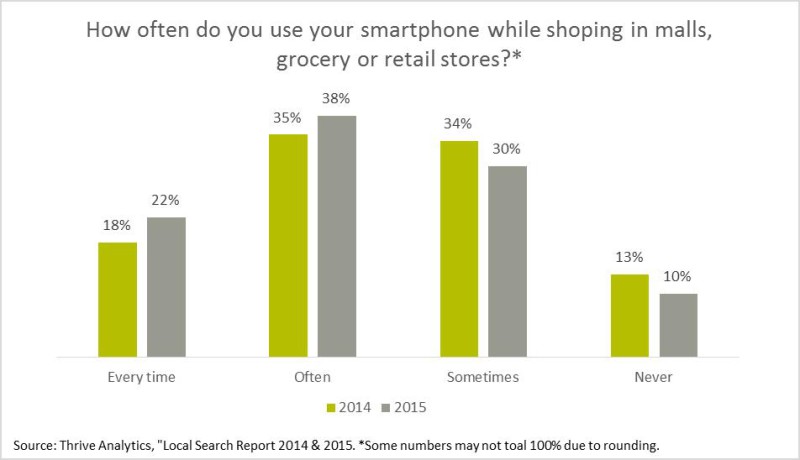
Conclusion. Consumers will use mobile phones while shopping. And modern technologies allow them to benefit from it. As it was pointed out before, consumers are responsive to ads in their phones. Therefore advertising messages that spur them into purchase, as well as specific trade offerings, can work effectively with the audience that doesn’t let phone out of their hands during shopping.
Geo-targeting allows to concentrate marketing efforts on target audience that is nearby competitors’ shops. These customers are already ready to make a purchase, interested in the company’s product or service. Don’t forget about other smartphone functions, such as mobile payments, fore example, which may also interest the tech savvy users.
Such technology as beacons allows to gather more information about customers. This data will help to better understand their wants and needs, create ideal conditions to make a purchase.
5. Consumers Respond To The Marketing Offer That Corresponds With Their Decision To Make A Purchase
The most effective are the ads that correspond with immediate needs of a person. According to the studies that took place in 2015, 56% consumers clicked an ad on their mobile phone and made a purchase simply because the ad was offering them exactly the product they were looking for at the moment. And 50% of respondents made a purchase because the ad provided a beneficial offer or suggested a sound discount.
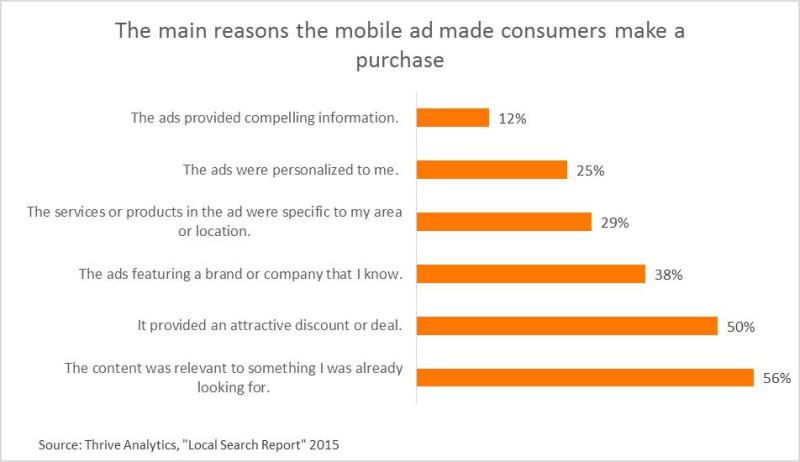
Conclusion. Since users often use their mobile phones on the go, their readiness to make a purchase can be very high at some points.
Therefore mobile marketing shall not only focus on brand promotion or targeting campaigns. It is important to find a way to address those consumers that are one step away from making a purchase.
Mobile coupons the clients receive entering the store are a good example of such communication with consumers. Another option is limited time offers that appear alongside with search results and motivate to make a purchase on the decision making stage.
6. Consumers Who Use Mobile Phones On The Go Are Ready For Action
Another way to measure the level of consumers’ involvement in mobile marketing is the level of their secondary activity. Secondary actions are those taken after the click on the ad. For example, making a hone call, search for specific directions, request for more details.
Researches have shown that geo-targeted ads cause higher level of secondary activity (2.5 times higher) than traditional ones.
As geo-targeted ads are usually aimed at the audience that uses mobile phone on the go, research shows that this category of users often reacts to reading the ad by taking an action.
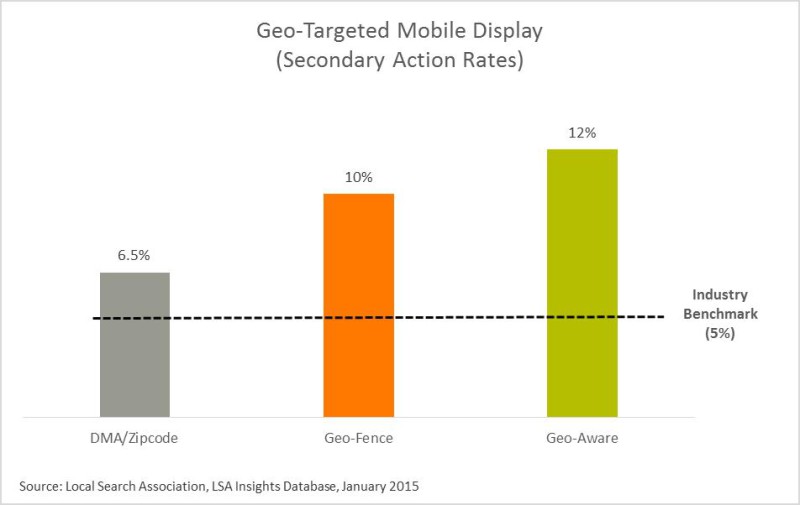
Conclusion. It’s company’s task to simplify making secondary actions for the consumer. Regardless of whether it leads to your landing page or website homepage, your mobile strategy must push the consumer to make a call, schedule a meeting or take another action that helps to quickly decide in favor of the purchase.
7. Local Mobile Search Is Targeted At Younger Generation
When representatives of different age groups were asked, how many time they spend searching for local products and services with their mobile devices, the response of those 18 to 29 years old (so-called “Generataion Y” was 47%, and for the group of 30 to 43 year-olds (Generation X) – 42%. Apparently, the gap is not that big. Similar question, when asked among representatives of the Young Boomers generation (ages 44 through 53) and those older had resulted in 18% and 13% respectively. This means that mobile marketing has better chance to find its addressees among the younger generations.
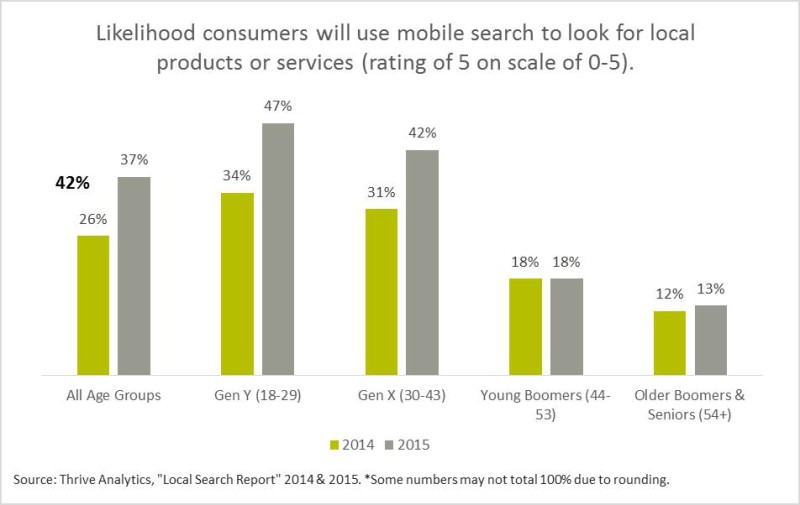
Conclusion. If limited resources dictate that you diversify your marketing efforts, you should concentrate on representatives of a younger generation. Such strategy has every chance to find a meaningful audience response and help you optimize your marketing efforts.
But you shall understand that picking such strategy is a generalization of a kind. It may not include the age group of the audience that possesses stable high income. Therefore you shall also consider the portrait of your ideal buyer when distributing your marketing efforts.
Anyways, targeted campaigns are efficient. By focusing on a specific target audience it’s easier to reach the desired results. And young audience represents a great target for a mobile marketing campaign.
8. Result Of The Mobile Advertising Campaign Largely Depends On Details
Regardless of the tool used, either the adjustable display of ads or direct e-mailing, you need to make every effort to maximize results of the marketing campaign. We have already discussed age and geo-specific targeting above.
Target audience can be determined by the season, day of the week, or even time of the day. Target objects may be consumer habits, income level, occupation, type of product/service offered. Marketing campaign can have a lot of such variables, and they can affect its execution and performance.
For example, storage and moving services in the USA are closely related to the summer boom of activity on the real estate market. Similar relations can be found in most industries.
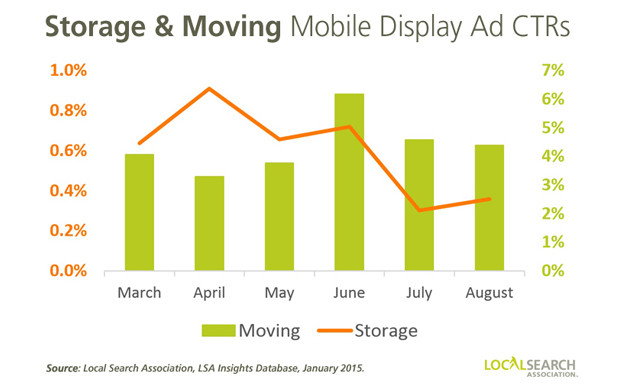
Conclusion. Don’t rely on generalized data and countrywide statistics, when planning a local mobile campaign. It’s best to focus on geographic segmentation, target audience and other local aspects that can help you setup the campaign with the best precision possible and give it higher chances of success.
These data are accessible and reliable. Using it allows marketing to be more targeted, saves money and allows you to expect the return of your investments.
9. Users Prefer Mobile Sites To Mobile Applications
In 2013 Google together with Nielsen, the leading market research company, had found out that 59% of consumers visit the websites of companies that interested them during the mobile search. However, another research had shown that 9 out of 10 small businesses’ websites are not adapted to be viewed on a mobile device.
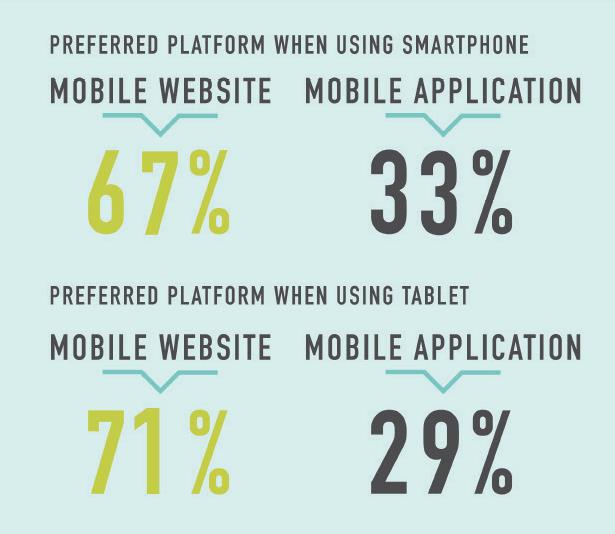
Conclusion. Every company must optimize its website for mobile devices. At that, there is no need to design an app for such devices. Many users browse the web during the web search. Therefore, optimization of the company’s own website to the smartphone format will help those using mobile internet on the go to access information about company’s products and services. Smartphone users are very positive about those websites that are optimized to the format of mobile devices, as this simplifies the information search for them. Visit to a website that is not adapted to the smartphone format can result in similar negative response as visiting a shop with poor customer service. Positive experience with the website, on the contrary, induces the user to continue using company’s products and services.
10. Users That Use Mobile Internet On The Go Typically Look For Local Content
According to the information published by Google in 2014, 56% of search requests on smartphones of those users that had already searched information “on the go” or while being in the shop were related to local content. Taking this fact into consideration, simply adding the name of the town or another geo-tag to your mobile ad can increase the number of clicks by multifold.
Researches show that half of all consumers that used local mobile search on the smartphone ended up visiting the shop within the next 24 hours. This ration only reaches 34% for tablet and traditional PC users.
Conclusion. Company must always ensure that information about its location is included in all mobile marketing messages. Users are mostly looking for directions to the firm (shop, fitness center, drug store, authority, etc.), therefore displaying it will make your marketing campaign more successful.
Company address, tagging to the nearby locations, maps and other information are of the utmost importance to establish connections with local consumers and to increase the efficiency of the marketing strategy.



